Foraging in Taiwan: A Journey into Wild Plants and Indigenous Wisdom
Delayed notes from a two week adventure into wild plants of Formosa
Recently, I traveled to Taiwan for a once-in-a-lifetime trip: I accompanied my 99-year-old grandfather from New Zealand to the World Masters Games—a kind of Olympic Games for seniors—held in Taipei. While that’s not the focus of this article, it’s worth a mention, and here is a fun video a Taiwanese social media outlet made.
As with most of my travels, I find myself organizing various land-based adventures. This time, I had the chance to meet up with Vivi from Chinese Farm Chronicles, and together we explored southern Taiwan under the theme of foraging. Here is a glimpse in our plant-based journey into ecology, culture, and connection.
Note: In this post, I refer to ‘Indigenous’ and ‘tribal’ communities with full respect for their cultural heritage, languages, and customs. These terms are used to describe the holistic, time-honored relationships these communities maintain with the land and its ecosystems.
The ancient art of foraging
Foraging is an expression of people’s connection to the land. By gathering locally available plant and transforming them into food, tea, or medicine, people engage on a more intuitive level with ecology. It is less about growing, and more about knowing. Observing, using your senses, foraging is an art that forces you to slow down.
In much of the Western world, foraging is somewhat of a lost practice, often reduced to picking mushrooms with your grandparents. Over the last decade however, foraging has foraging has become trendier thanks to some pioneering restaurants (Noma in Copenhaguen) and passionate authors (may I mention Pascal Baudar). Even in China, the practice of dǎ yě (挖野) “hunting the wild”, has become somewhat viral in younger generations, with online users sharing their plant-based loot on social media.
In Taiwan, foraging for wild plants has a long history, especially amongst tribe communities, for whom wild plants are an essential part of diets. Some tribes, like the Amis (one of the largest Indigenous groups of the 16 officially recognized in Taiwan) can recognize over 200 species of edible wild plants. From this knowledge have emerged many culinary traditions which reflect the co-evolution of people and place.
Taiwan’s diverse topography supports extraordinary biodiversity: over 4,200 species of native plants, around 1,000 of which are endemic. Indigenous communities are the gatekeepers of this botanical knowledge. Actually, since 2019, Taiwanese law has formally recognized their right to harvest wild plants on traditional lands without a permit, an acknowledgment of their sustainable practices and ecological wisdom.
A cup of wild tea
During my last visit in Taiwan, I was introduced to the founders of ‘Taiwan Wild Herb Tea’ Sanyuehao ‘三玉號野草茶’, Su Li-Chung and Chou Yi-Ching. Through collaboration with tribe communities across Taiwan, they reimagine modern uses for wild plants by handcrafting wild herbs products : teas, syrups, tonics…
An entomologist turned eco-chef and tea brewer, Su Li-Chung is passionate about indigenous ecological knowledge, and has spent many months amongst different communities learning about their wild plant traditions. By applying traditional tea-making methods to wild plants, he creates uniques herbal blends, each telling the story of a unique socio-ecological terroir. For instance, the Dipit (an Amis term that refers to “place”) Wild Herbal Tea - personal favorite of mine - is a year-long co-creation with the Amis tribe in Fuxing, Hualien.
But more than anything, Su Li-Chung and Chou Yi-Ching’s mission is social : they seek to share the cultural legacy of traditional knowledge and encourage consumers to connect with the communities behind each brew. By supporting sustainable practices upstream, they hope to empower local tribe members to harvest, process and keep the knowledge of their plants in their community. As sourcing wild plants is not a straightforward supply chain, they must partner with a number of foragers and farmers, which also provide economic incentive for young people to learn these new foraging skills.
On a sunny Sunday morning, Su Li-Chung and Chou Yi-Ching’s drove me to one of their very first wild herb suppliers, a small family farm just east of Taipei in Nangang. After a short hike up the hill (there is no car access), we arrive at Chunxuan farm (椿萱農場), a terraced hillside farm overlooking the city, where Gao Dongming cultivates crops by hand on a single hectare of land inherited from his mother. Huge bags of dried fish mint are waiting to be picked up. Houttuynia cordata—“fish mint” or zhe'ergen (折耳根)—a pungent herb known for its respiratory benefits and Oolong tea-like aroma.
Dongming’s passion is contagious. As we discussed harvesting, propagation, and drying techniques, it is clear that for him, growing wild plants is a continuous learning process. His long-standing friendship with Su and Chou reflects a shared commitment to respecting nature. After a tour of his patch of fish mint, we leave the farm with a very full car and plenty of inspiration.
From Taipei to Taitung, the wild heart of Taiwan
Our journey continued to Taitung county, on Taiwan’s southeast coast, an area known for its dramatic landscapes, remote communities, and strong Indigenous heritage. Tribes such as the Amis, Bunun, and Rukai call this region home. Lush with green mountains that fall into black sand beaches, Taitung is iconic of Taiwan’s wilderness.
Since 2012, Taitung has embraced the slow food movement, celebrating local and seasonal produce, traditional agriculture, and communal values. From roselle and red quinoa to millet and sailfish, local ingredients shine on restaurant menus across the region.
We visited Earth Passengers, a permaculture farm that hosts design courses twice a year. Within their food forest, co-founders Peter and Hui-i showed us a lush landscape full of fruit trees, medicinal herbs, explaining that while most nearby farms still use chemical inputs, a small but growing number of producers are returning to more sustainable ways.
Living local wisdom in Taromak village
Enter Lily Wen, a brilliant local foraging expert from Taromak village, home to members of the Rukai tribe. Charismatic and deeply knowledgeable, Lily is the daughter of the village’s last shaman and currently completing a PhD in anthropology at Taitung University. She writes in English to connect her work with Indigenous groups across Austronesia. Once finished, she hopes to open a cooking school from her home - she previously used to run a tribal cafe and still hosts WWoofers from time to time.
I first met Lily in 2024 at the International Permaculture Conference, also held in Taromak. Her talk on traditional ecological knowledge emphasized the inseparable bond between people and their environment. For the Rukai, she explained, this knowledge is an evolving system of beliefs and practices, passed down through generations.
We spend the day with her foraging local plants : such as the leaves of the prickly ash tree Cicong (刺葱), which we will use to stuff a fresh fish bought from the neighbour and cooked over the fire. In one field, we gathered young squash stems while her relatives were weighing and bagging the harvest squash. We passed a group of women working with millet: members of the Taromak Women’s Agricultural Association, preserving and sharing ancestral skills with the younger generation.
As we wandered through the village, Lily explains how tribal members maintain strong ties to their land: it is where they come from and where they will return to. For Lily, food is how she connects and shares her culture, as we get to experience with each bite of fish cooked over the fire and sip of millet wine.
After a nourishing meal, we visited the village meeting grounds, where we napped in a traditional bamboo structure before walking into the forest toward the river. Our last stop was her cousin’s aromatic herb farm, where family and friends from various tribes were gathered for a late afternoon meal. Her cousins shows her field, with rows of various mints and aromatics interplanted with trees. I pluck and chew a stevia leaf with one of peppermint: the sweetest and freshest combo than anything I’ve ever tasted.
Taiwan’s wild plant culture is not just alive, it’s thriving. We leave inspired, ready to be a little bit bolder in our cooking, and creating our own foraging traditions wherever we are in the world.
Recommendations
Taipei :
Taidong :
Dawana Cafe by Lily Wen
Books :
Edible Wild Greens of Taiwan’s Pangcah People - Wu Hsueh-yueh
Braiding Sweetgrass - Robin Wall Kimmerer
The New Wildcrafted Cuisine - Pascal Baudar
Eat Weeds - Diego Bonetto

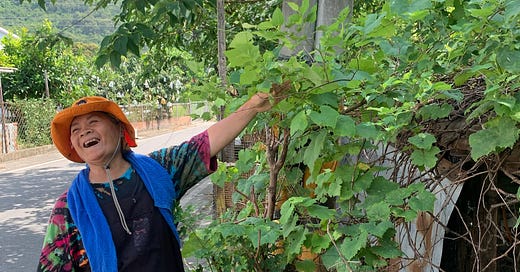


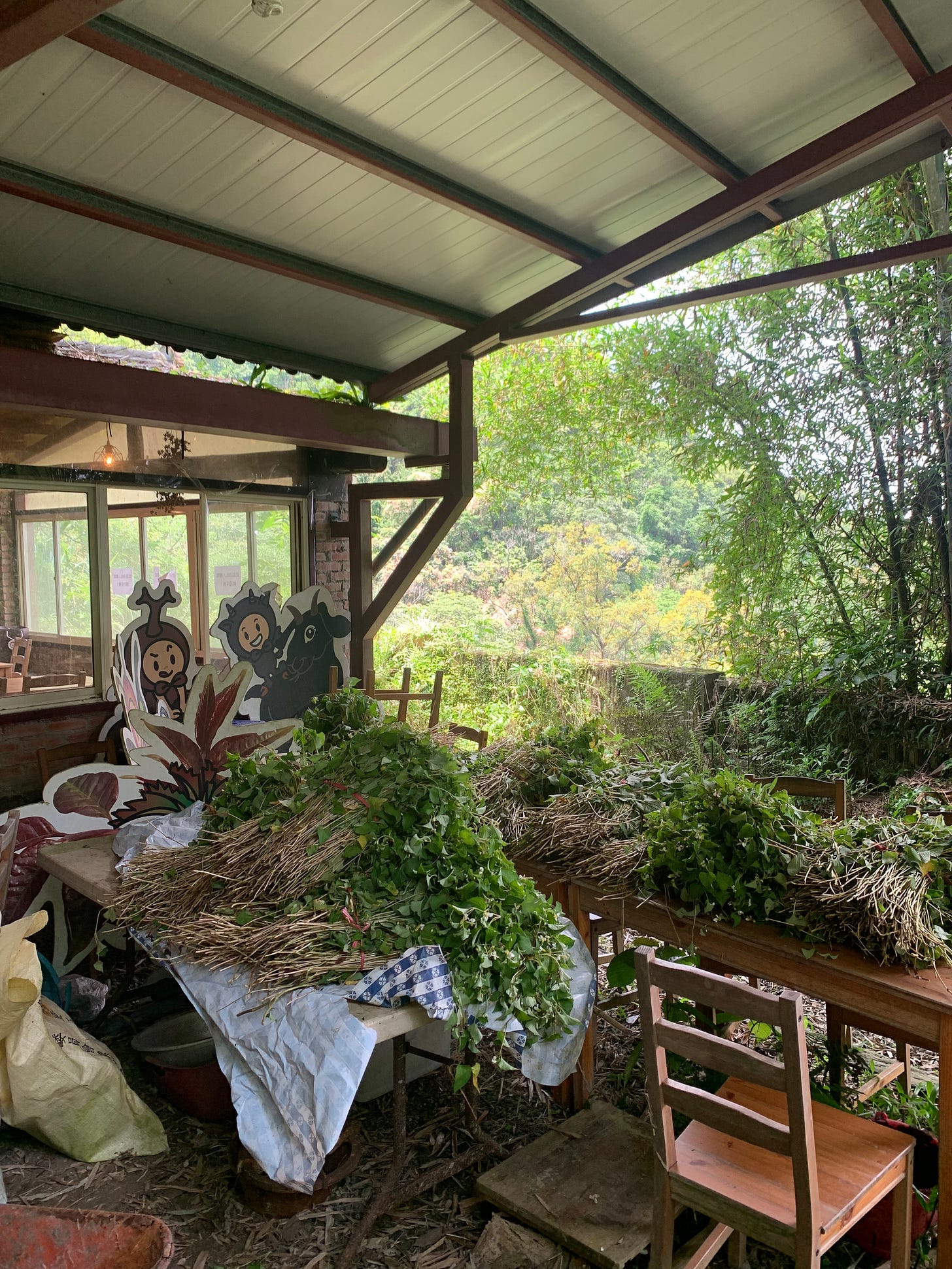
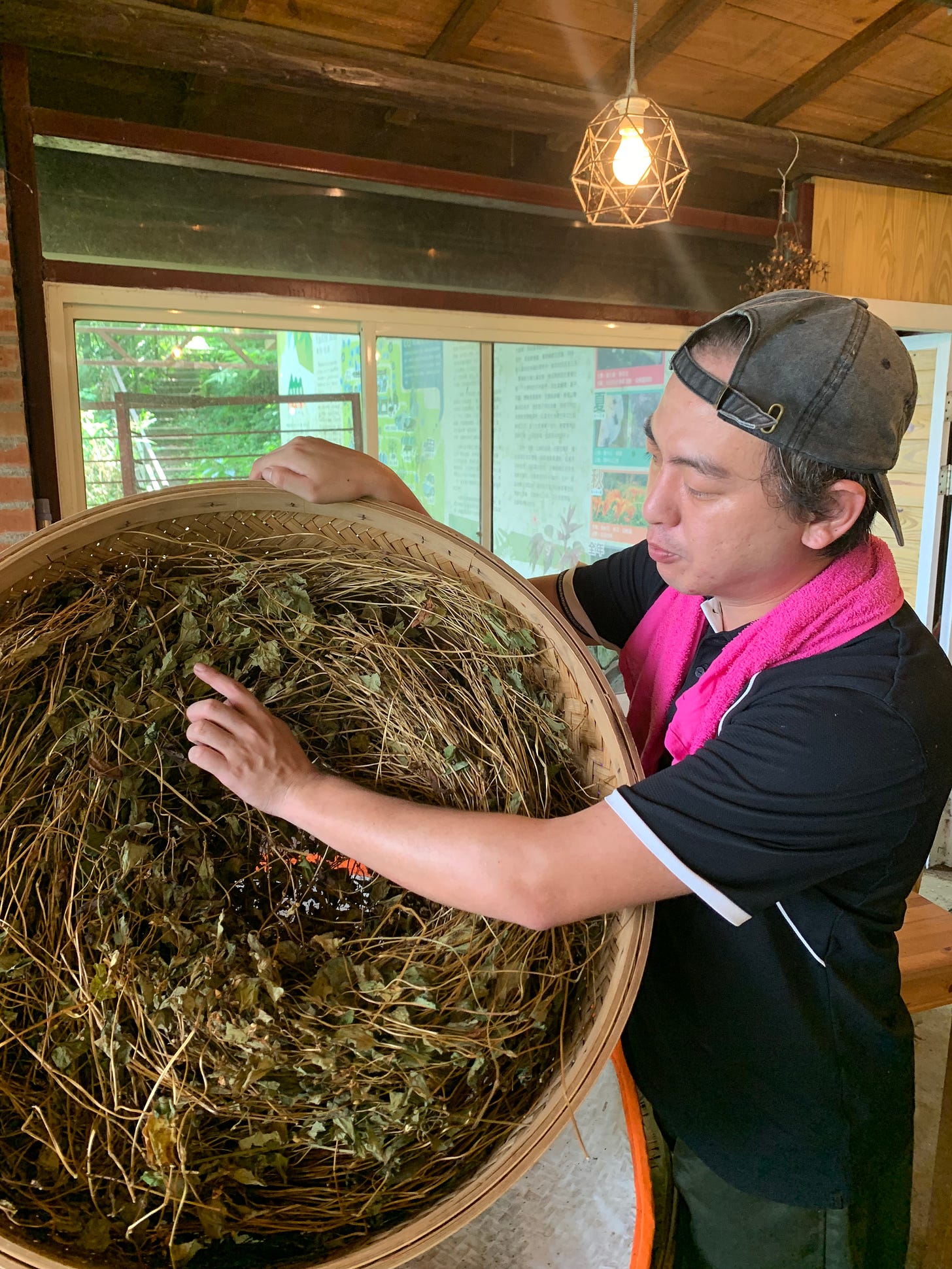
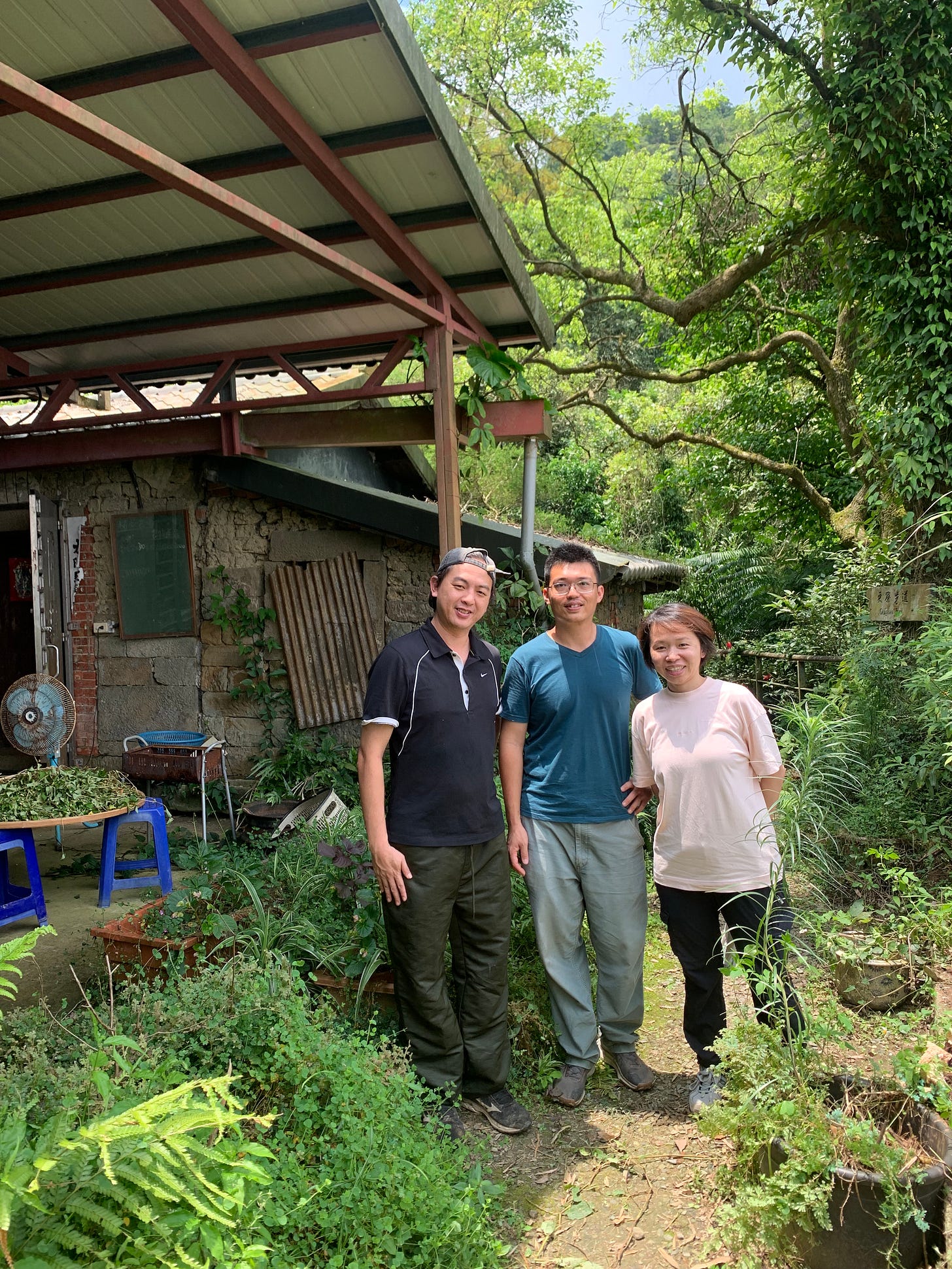
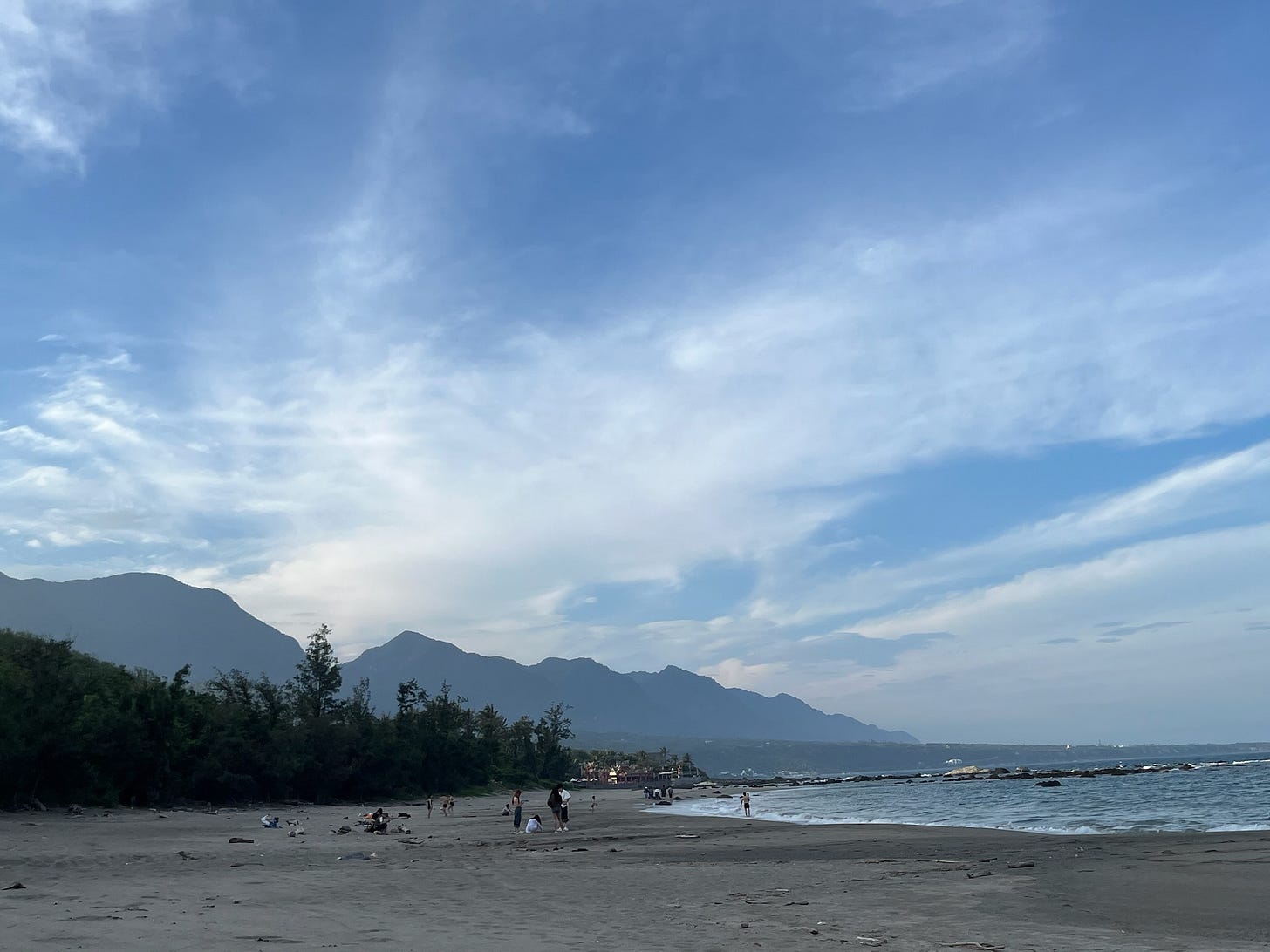
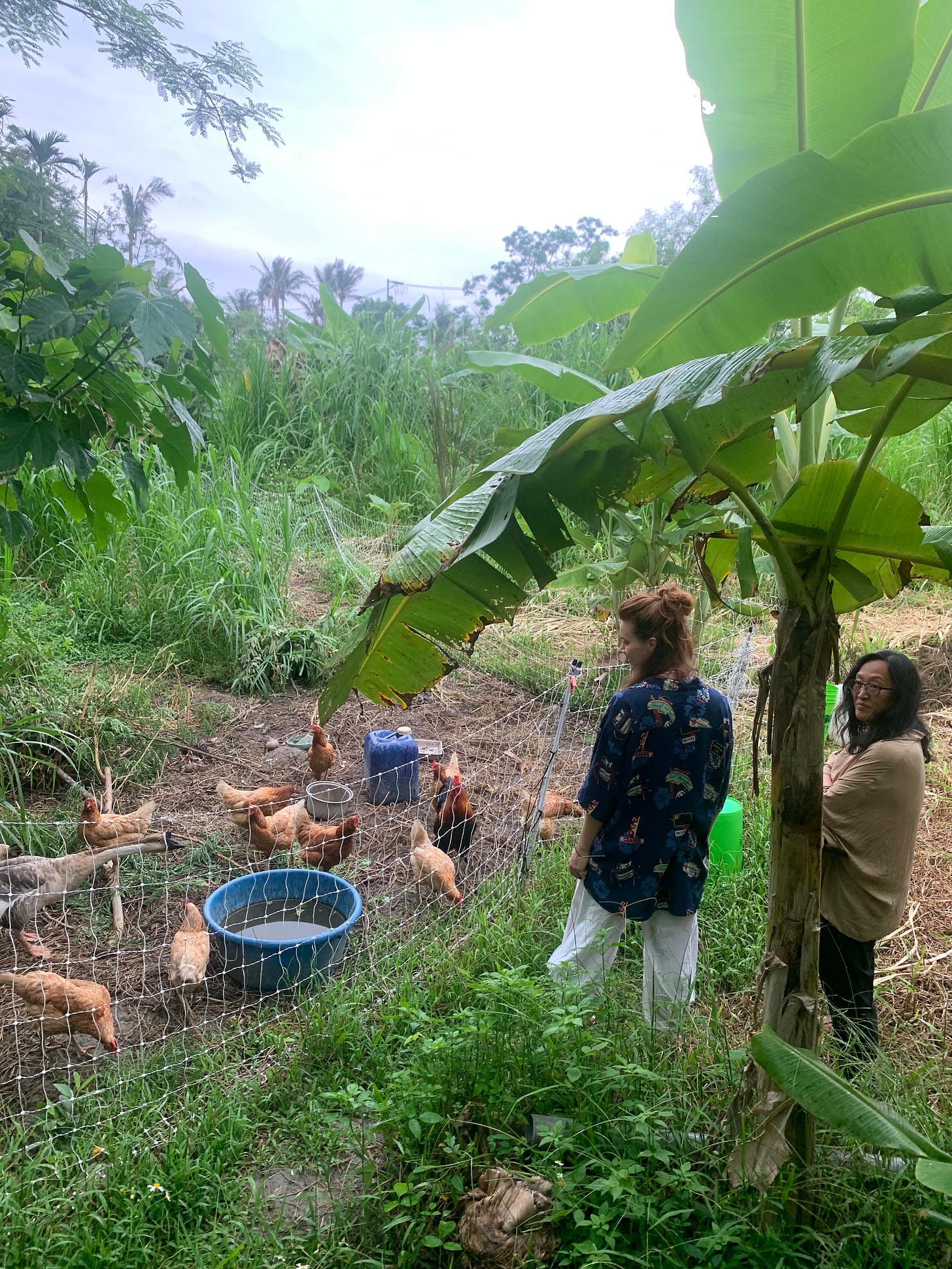

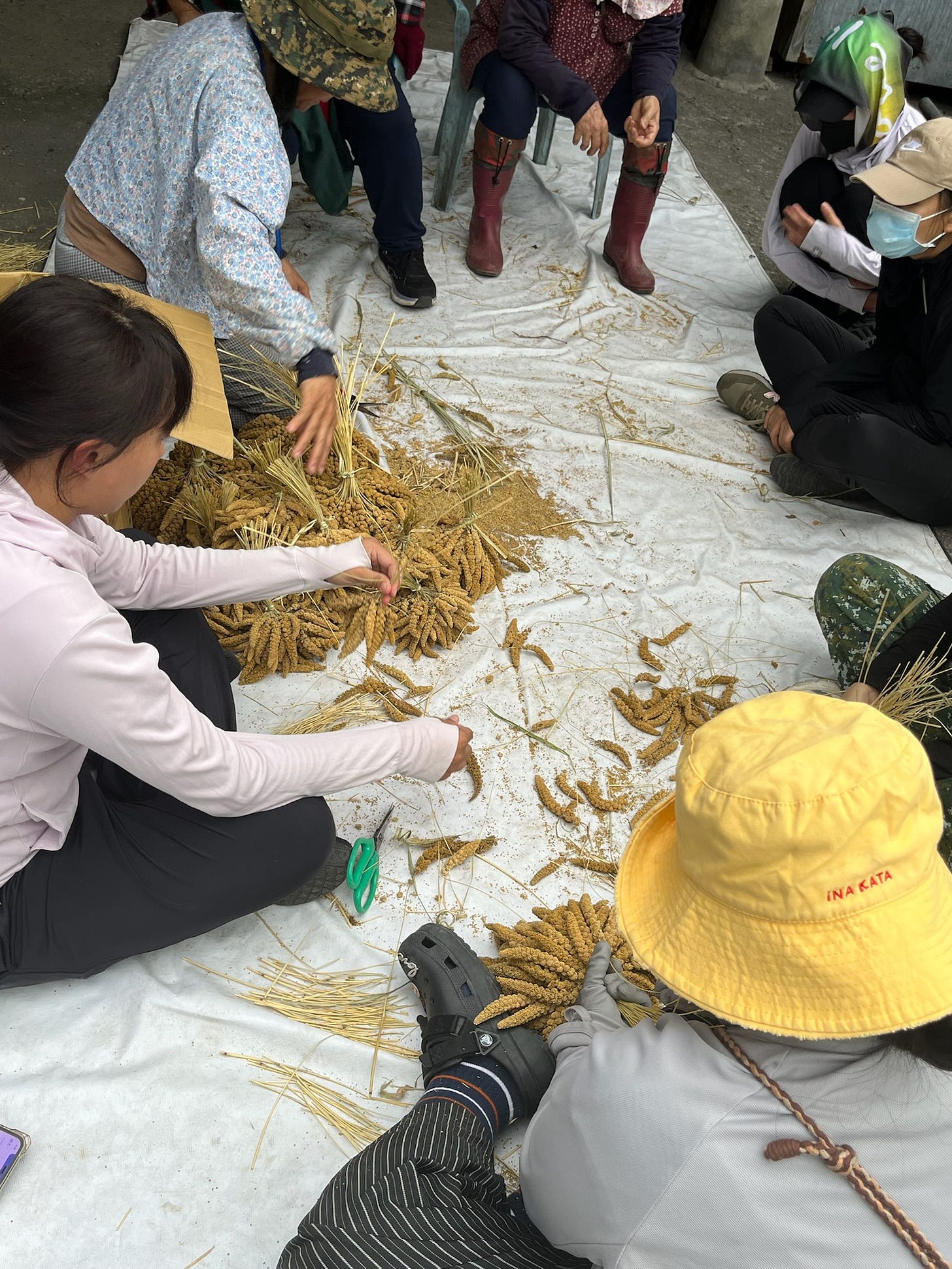
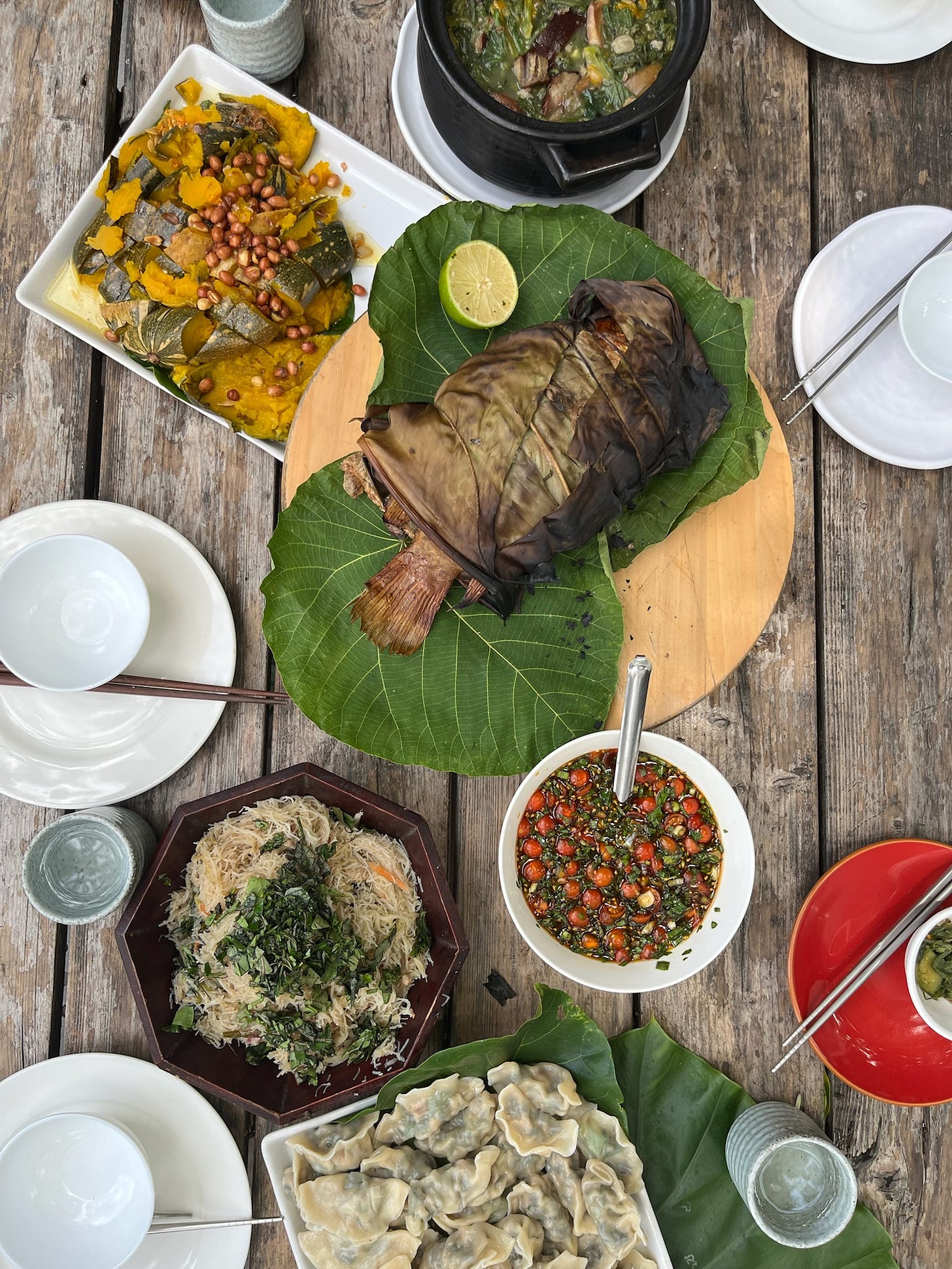
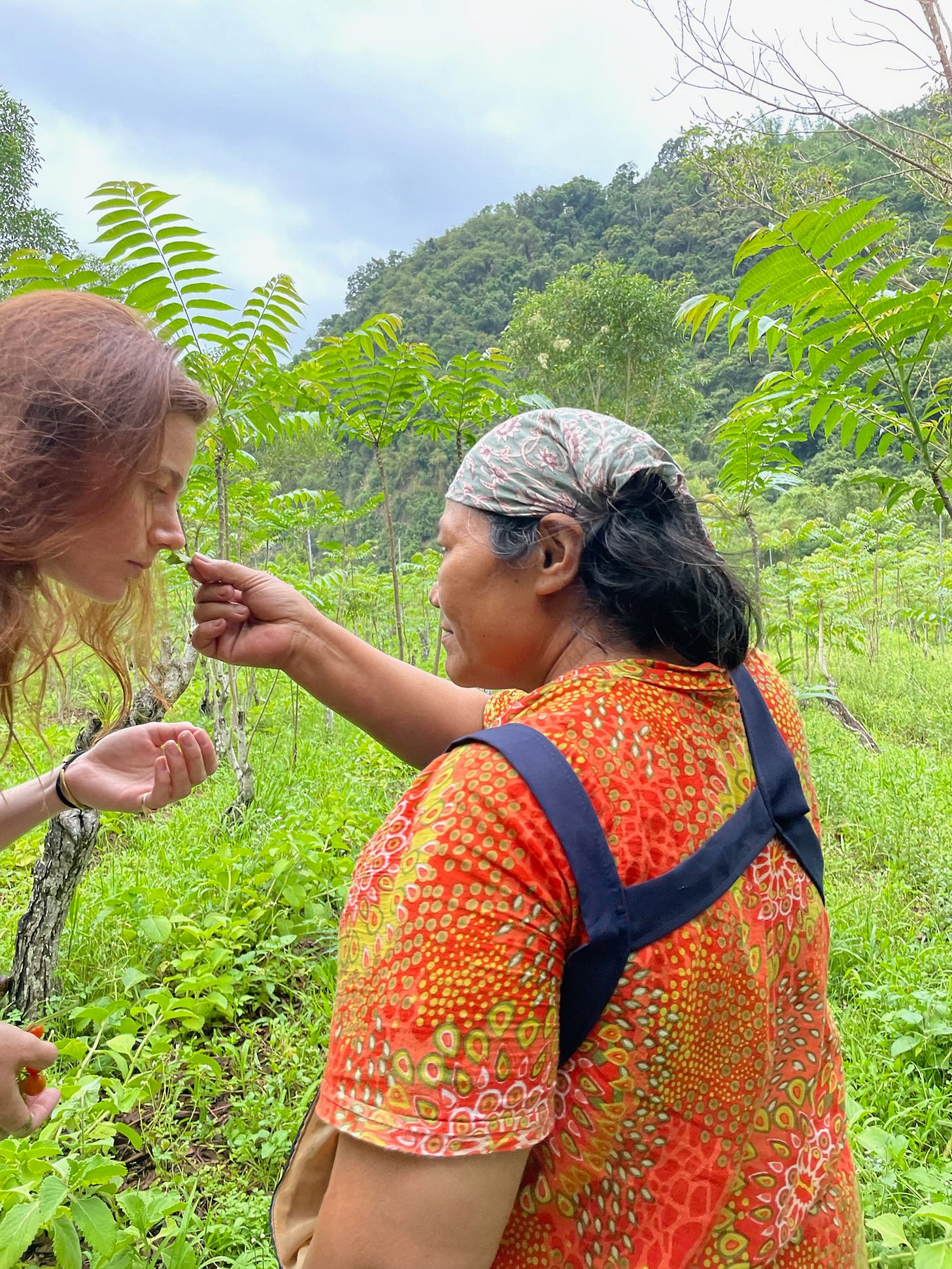
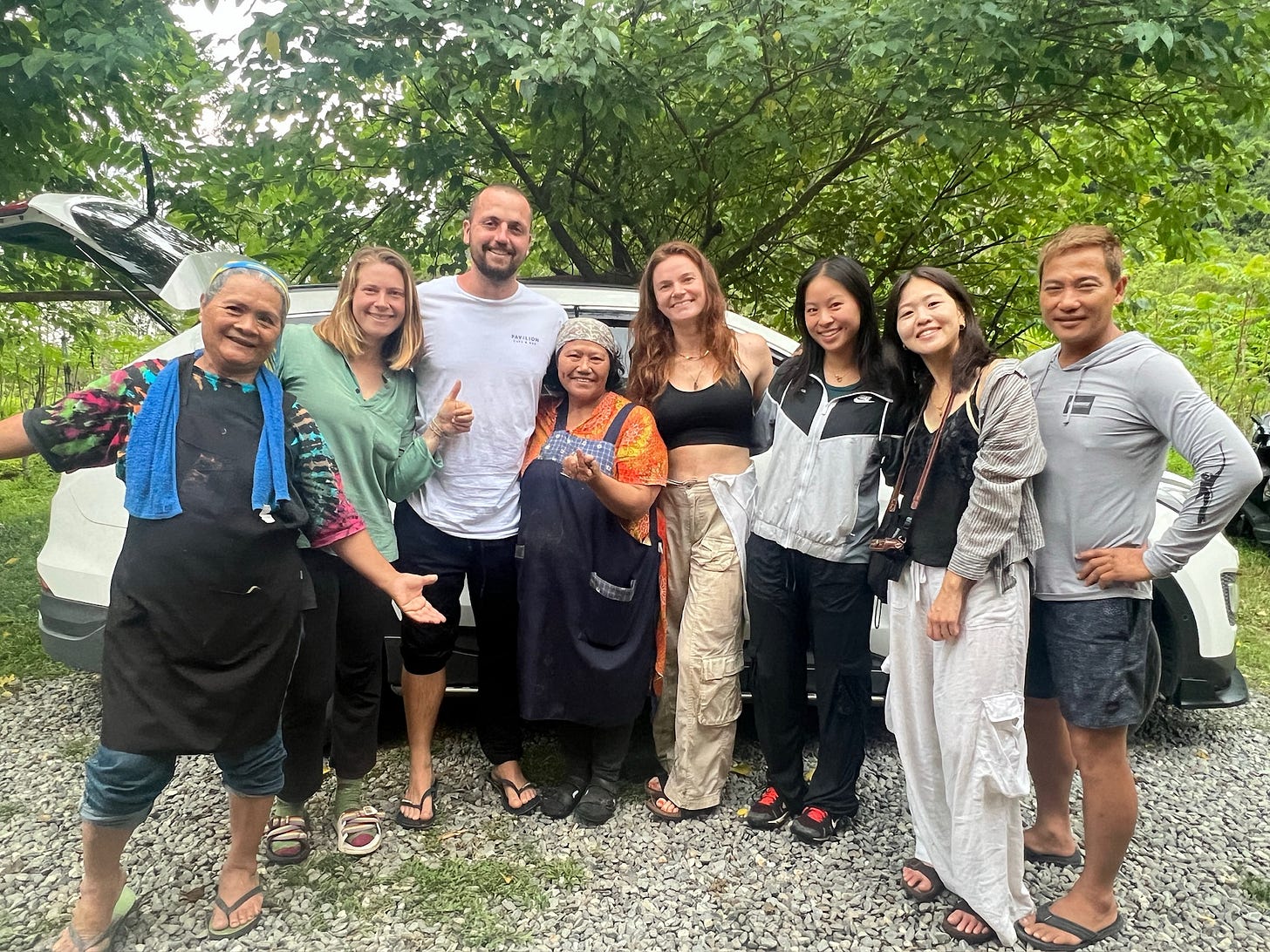
Such a rich and generous piece. I’ve bookmarked all the recommendations, especially Lily Wen’s cafe - what a remarkable woman. You’ve captured that rare feeling of being a guest on land that still knows who it belongs to.